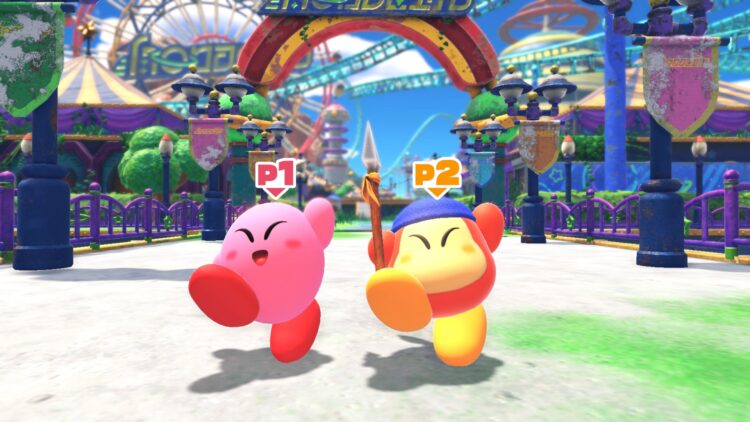
When it comes to any contemporary discussion of video games, the quality of a game’s graphics are just about omnipresent. Whether it’s in the context of full game reviews, analyzing trailers, or anything in between, the way a game looks is an essential conversation point. And how could it not be? The gameplay and mechanical ‘meat’ of a game is obviously abundantly important to the overall experience – typically more so than the graphics – but you can’t deny the allure of a pretty coat of paint. From games like FromSoftware’s “Elden Ring” with its vast landscapes full of dreary and foreboding ruins, to Supergiant’s 2019 release “Hades” which blends classical Greco-Roman architecture with gorgeous interpretations of greek mythological figures, to even Square Enix’s recent “Triangle Strategy” whose brilliant “HD-2D” style blends 3-dimensional environments with exceptional spritework to create a surreal, eye catching visual effect, games are as inseparable from their graphics as a book is from the paper it’s printed on.
But perhaps those games wouldn’t be considered the best examples by the general public; at least not the latter two, despite how gorgeous they are. In general, people tend to speak higher of games with more technologically striking and realistic visuals rather than those with more distinct styles that may not reach the same polygon count. Most recently, the 2021 Game Awards category for Best Art Direction was awarded to “Deathloop,” a game which, while certainly pretty and given a bit of surrealistic flair in the VFX department, wasn’t exactly considered to break new ground in terms of its style. As GameRant put it after the nominees were announced, Deathloop’s “visuals are not what many players remember about the game,” expressing their belief that it was unlikely to win the Art Direction award in favor of its other nominations.
This award was considered especially shocking to many, as “Deathloop” was up against a collection of games with artistic choices that dramatically stood out among their contemporaries. Chief among these was the cult smash hit “Psychonauts 2,” which was globally renowned for its exceptional character designs/animation and diverse, 2000s-cartoon-reminiscent world that was applauded by reviewers and artists alike. In fact, the last time a game whose visuals weren’t remotely realistic won TGA’s Art Direction award was back in 2017 and 2018 (with “Return of the Obra Dinn” and “Cuphead” respectively). This, despite many gorgeous stylized games like “Ori and the Will of the Wisps” and the aforementioned “Hades” also being released in that period, shows a notable bias towards games whose visuals are more down-to-earth and technologically impressive, rather than those that are more distinct and artistically impressive.
This sentiment is also seen in the fact that almost no modern AAA gaming company has used spritework in their home console games since the switch from cartridges to disks. Despite the vast history of almost all retro games using sprites (admittedly out of necessity) and a huge majority of indie games following suit, both creating stunning effects within that context, the medium as a whole has been nearly abandoned by the majority of bigshot game corporations. Even franchises known for producing some of the most gorgeous spritework of all time, like “Street Fighter” with the excessively smooth and detailed “Street Fighter 3: Third Strike” or the exceptionally stylish second installment of “Marvel vs. Capcom,” have abandoned this medium in favor of 3D models for their recent titles. What’s most damning is that this change, which most long-running fighting game franchises have adhered to, isn’t even considered an upgrade in most cases, with games like “Marvel vs Capcom: Infinite” being notoriously sterile and ugly.
All this isn’t to say that 3D models and hyperrealism are the devil, though. No one approach to artistic expression is more valid than another. “Elden Ring,” as mentioned earlier, is still exceptionally gripping, communicative, and provocative from a visual perspective despite rendering much of its landscapes in as realistic a way as possible. In more extreme cases, games like “The Last of Us Part II,” though rightfully hounded for its developer’s egregious crunch periods, still has gorgeous visuals that successfully evoke the depth of its environments and the personalities of its characters. Crucially, it’s not that realistic visuals don’t work. Overvaluing them for being more ‘impressive’ from a technological perspective runs the risk of oversaturating the market and undervaluing the vast array of available styles that fall outside of that context.
It is for this reason that I believe we must draw a line between discussion solely of a game’s graphical fidelity and discussion of its overall visuals. While processing power and performance is an essential piece of a game’s visuals and poor performance can ruin otherwise strong visuals, it’s just that: a piece, not the whole story.
As a closing example, Nintendo recently released a demo for the upcoming “Kirby and the Forgotten Land,” which cadaverously revealed that the game would be locked to 30 FPS – half the industry standard. This is a major blow to how pretty the game can appear in motion, as being so far below its contemporaries for refresh rate deeply cuts into how smooth the world can appear. Even I, as the biggest and most obnoxious “Kirby” fan in the history of history, can’t just gloss over this detail like it’s not a big deal. But, all that being said, it still doesn’t make every other facet of the visuals any less captivating. The abandoned city environments are densely populated with hidden details and worn signs that make the world feel lived in, while the colors and inhabitants therein are still so bright, vibrant, and pretty that the classic, adorable “Kirby” style is well-maintained. Now, if this game’s visual style was widely panned and criticized just for the framerate lock and the dev team felt the need to take a new approach – even though the style was never the issue – then what would we be left with? A “Kirby” game where you can see every blade of grass and every pore on his skin? That sounds pretty wack to me.








the person who wrote this is cool 🙂
Cool article by a cool homie 🙂